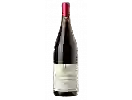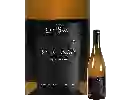
Vignoble DinocheauVieilles Vigne Sauvignon Blanc
This wine generally goes well with vegetarian, rich fish (salmon, tuna etc) or shellfish.
Food and wine pairings with Vieilles Vigne Sauvignon Blanc
Pairings that work perfectly with Vieilles Vigne Sauvignon Blanc
Original food and wine pairings with Vieilles Vigne Sauvignon Blanc
The Vieilles Vigne Sauvignon Blanc of Vignoble Dinocheau matches generally quite well with dishes of rich fish (salmon, tuna etc), shellfish or vegetarian such as recipes of tuna lasagna, mouclade or ham and comté quiche.
Details and technical informations about Vignoble Dinocheau's Vieilles Vigne Sauvignon Blanc.
Discover the grape variety: Allison seedless
American, intraspecific crossing between the red globe and the princess obtained in 2000 by the Sheehan genetics (California). It can be found in the United States, South Africa, Spain, Italy, ... almost unknown in France because of a very late maturity.
Informations about the Vignoble Dinocheau
The Vignoble Dinocheau is one of of the world's greatest estates. It offers 17 wines for sale in the of Loire Valley to come and discover on site or to buy online.
The wine region of Loire Valley
The Loire Valley is a key wine region in western France. It follows the course of the Loire River on its Long journey through the heart of France, from the inland hills of the Auvergne to the plains of the French Atlantic coast near Nantes (Muscadet country). Important in terms of quantity and quality, the region produces large quantities (about 4 million h/l each year) of everyday wines, as well as some of France's greatest wines. Diversity is another of the region's major assets; the styles of wine produced here range from the light, tangy Muscadet to the Sweet, honeyed Bonnezeaux, the Sparkling whites of Vouvray and the juicy, Tannic reds of Chinon and Saumur.
The word of the wine: Draft liquor (champagne)
After blending, the wine is bottled with a liqueur de tirage (a mixture of sugar and wine) and a yeast (selected yeasts). The yeast attacks the sugar and creates carbon dioxide. The fermentation, which lasts about two months, is prolonged by an ageing period (15 months minimum in total). The bottle is capped (some rare vintages are capped with a staple and a cork).














